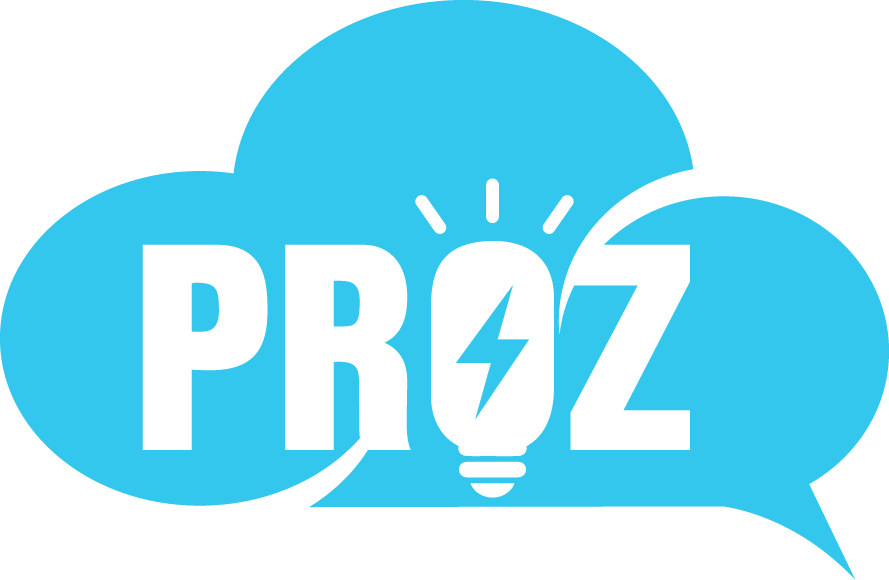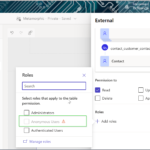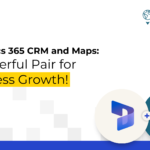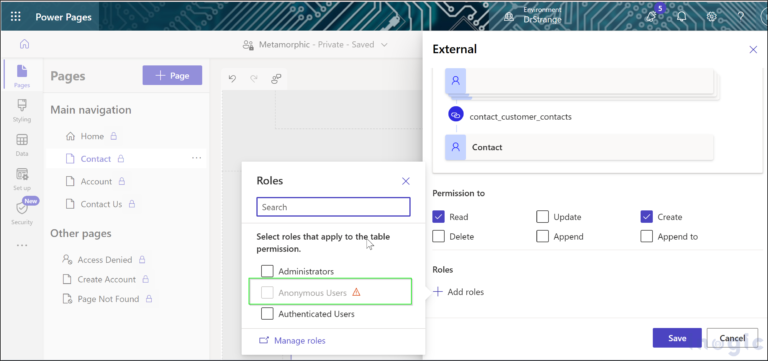NetSuite is the #1 Cloud ERP. In 2022, NetSuite became a leader in the Gartner Magic Quadrant for Cloud ERP for Service-Centric Enterprise. As you might remember from our previous articles, Salesforce is #1 Cloud CRM. As leaders in their fields, thousands of businesses apply to Salesforce and NetSuite. Over 40,000 organizations across the globe use NetSuite ERP. Salesforce, in turn, is used by over 150,000 companies across every major vertical. But the two giants aren’t connected out of the box. So, how to connect Salesforce & NetSuite and get the most out of such integration? Follow the article to get valuable tips.
What is ERP and CRM?
Let’s start from the very beginning and figure out the abbreviations.
ERP stands for Enterprise Resource Planning. ERP systems have been created to assist businesses with managing their daily work: financial management, human resources, supply chain management, accounting – almost all processes to run a company smoothly and stay organized. It’s like a program where organizations keep track of everything they do. ERP system consolidates enterprise data and processes. So, businesses can gather separate departments and improve workflows.
CRM refers to Customer Relationship Management. CRM systems help businesses to be better at taking care of their customers (or leads – potential customers) and building good relationships. CRM collects everything that is known about customers and leads: the last interaction date, what customers bought, and why. CRM is like a digital assistant that remembers everything important about customers and leads.
Generally, CRM is oriented on the clients, while ERP is oriented on company resources. After integrating the two systems, businesses can provide services faster and make them more personalized. Businesses can avoid discrepancies between sales and inventory, reduce manual data entry, increase the accuracy of quotes, and more.
What is NetSuite?
NetSuite is a cloud-based Enterprise Resource Planning (ERP) software platform that provides a wide range of tools and functionalities to help businesses manage their various activities.
Implementing NetSuite ERP provides many features and capabilities, such as accounting, financial management, inventory control, order processing, and more. NetSuite offers powerful reporting and analytics tools, empowering users to create reports and dashboards that deliver real-time insights into their business activities.
NetSuite can grow with your business. As your company expands, you can add new modules or features to adapt to your changing needs. It’s a scalable solution that can support both small and large enterprises.
Does NetSuite integrate with Salesforce?
Yes, NetSuite can be synced with Salesforce, and many businesses find this integration highly beneficial. This integration allows for the seamless data flow between CRM and ERP systems. Such integration can be a game-changer, especially if the business relies on both systems for managing different aspects of business operations.
Don’t forget to check out: Why Zero Code App is The Best Option For WhatsApp Integration With Salesforce?
Why integrate Salesforce with NetSuite
Generally, businesses integrate these two powerful technologies to facilitate data transfer between them. But it’s not all, and the list of benefits companies get is much longer. A few of them are the following:
With both systems working together, your team can have a comprehensive view of each customer. This includes their sales history, payment status, etc.
NetSuite and Salesforce integration ensures that critical data, such as customer contact information, product details, and pricing, remains consistent across both systems. This helps to avoid potential confusion that might occur due to the need to work with two technologies separately.
Orders placed in Salesforce can be automatically transferred to NetSuite for processing. This streamlines the order-to-cash process and reduces the risks of mistakes. As a result, business gets quicker order fulfillment.
Manual data entry and the need to match up data between Salesforce and NetSuite could be eliminated, saving your business time and reducing operational costs.
Last but not least, the integration can be customized to fit your specific business needs, ensuring that it aligns with your unique processes.
Benefits of Salesforce and NetSuite Integration for various Industries
To build a bridge between two business often-used technologies is always a good idea. Various industries benefit from integrating Salesforce CRM and NetSuite ERP to streamline operations, improve data accuracy, and enhance customer relationships.
1. Retail and E-commerce
Integrating Salesforce and NetSuite allows the retailer to manage customer relationships, track sales, and monitor inventory efficiently. When a customer orders online, the integration ensures that the order details seamlessly transfer to NetSuite. This allows the retailer to maintain accurate inventory levels and promptly process orders. It also enables the sales team to access customer purchase history, preferences, and interactions, providing a more personalized shopping experience.
2. Manufacturing
The manufacturers use Salesforce and NetSuite integration to manage their supply chain more efficiently. When distributors and sales teams place orders in Salesforce, the integration ensures that the order details flow seamlessly into NetSuite, providing real-time visibility into demand and inventory. This helps the manufacturer optimize its production schedules and inventory management. Also, integration ensures that the production team has real-time visibility into order demand, allowing them to schedule production and manage inventory.
3. Financial Services
Imagine an investment management company that provides financial advisory services and manages client portfolios. When new clients are onboarded through Salesforce, the integration automates the process of creating client accounts and managing financial data in NetSuite. This reduces manual data entry, streamlines client onboarding, and improves data accuracy.
4. Healthcare
For example, a healthcare provider uses Salesforce to manage patient data and communicate, while NetSuite handles financial operations. When a patient receives healthcare services, Salesforce records the patient’s visit details, and the integration ensures that this information flows into NetSuite for accurate billing. The integration also tracks insurance claims, ensuring that they are filed promptly, and payments are accurately recorded.
Celigo as Salesforce and NetSuite Connector
Celigo is a trusted integration platform that bridges Salesforce, a leading CRM system, and NetSuite, a robust ERP solution. This connector empowers businesses to harmonize customer relationship management with financial and operational data, resulting in more efficient and informed decision-making.
With Celigo, organizations can seamlessly synchronize data and automate processes between their Salesforce and NetSuite instances. This integration not only minimizes manual data entry but also ensures that both customer-facing and back-end systems are always in sync.
Celigo’s pre-built connectors and templates simplify the integration process, allowing businesses to save development time and resources. Moreover, it offers scalability and flexibility, accommodating the growth and evolving needs of businesses of all sizes. Celigo’s Salesforce and NetSuite Connector is a powerful tool for achieving operational efficiency and improved customer experiences.
From a Salesforce developer’s perspective, using Celigo as a Salesforce and NetSuite Connector offers several advantages:
- Simplified Integration: Celigo provides pre-built integration templates and connectors, reducing the complexity of integrating Salesforce with NetSuite. Developers can focus on customizing the integration to meet specific business requirements.
- Rapid Development: Developers can leverage Celigo’s pre-built connectors and templates, accelerating development and reducing the need for extensive custom coding, enabling them to deliver integration solutions faster.
- Streamlined Maintenance: Celigo’s connector automates data synchronization, reducing the need for ongoing manual maintenance and troubleshooting allowing developers to allocate more time to other development tasks.
- Scalability and Flexibility: Developers can quickly adapt Celigo’s connectors to accommodate evolving business needs, making it a flexible and scalable integration solution for growing organizations.
- Real-time Visibility: Celigo’s real-time data synchronization ensures that developers have access to the most up-to-date information for creating and maintaining applications, enhancing the quality of applications that rely on Salesforce and NetSuite data.
How to integrate Salesforce with NetSuite?
Integrating Salesforce with NetSuite via Celigo from a developer’s perspective involves customizing and configuring the integration using Celigo’s integration platform. Here’s a step-by-step guide on how to achieve this integration:
Step 1: Access Celigo’s Integration Platform
Log in to Celigo’s integration platform using your developer credentials.
Step 2: Install and Set Up the Salesforce and NetSuite Connectors
In the platform, navigate to the App Connections or Connectors section. Install and configure the Salesforce and NetSuite connectors. Ensure that the connection details, authentication settings, and permissions are correctly set up.
Step 3: Create an Integration Flow
Define the integration flow by specifying which data objects you want to synchronize between Salesforce and NetSuite. Create a new integration flow in Celigo for this purpose.
Step 4: Configure Data Mapping
Configure data mapping rules that determine how fields in Salesforce correspond to fields in NetSuite. This mapping ensures that data is correctly aligned for synchronization.
Step 5: Set Up Triggers and Actions
Define triggers and actions for your integration flow. Triggers initiate data synchronization when certain conditions are met, while actions specify what data to sync and where it should go.
Step 6: Add Custom Logic (if needed)
If your integration requires custom logic or transformations, such as data enrichment, data cleansing, or business rules, you can implement these within Celigo’s integration platform. Write custom scripts as needed.
Step 7: Test the Integration Flow
Thoroughly test the integration flow to ensure that data is transferring accurately between Salesforce and NetSuite. Verify that triggers and actions work as expected and that your custom logic, if any, is functioning correctly.
Step 8: Data Migration and Initial Sync
If you have existing data in both systems, plan for a one-time data migration. Ensure that your initial sync accurately transfers historical data.
Step 9: Deploy the Integration Flow
Once testing is successful, deploy the integration flow. Ensure that it runs smoothly and according to the defined schedule.
Step 10: Monitor and Maintain
Regularly monitor the integration flow in Celigo’s dashboard. Set up alerts for any errors or issues. Stay updated on system updates and apply changes as necessary.
Step 11: User Training
Train your team, including Salesforce and NetSuite users, on how to utilize the integrated data effectively. Ensure they understand the changes and benefits of the integration.
Step 12: Documentation
Maintain detailed documentation of your integration setup, including data mapping, field descriptions, and integration schedules. This documentation will be invaluable for troubleshooting and future improvements.
Step 13: Continuous Improvement
Continuously evaluate the performance of your Salesforce-NetSuite integration via Celigo and look for ways to optimize it. As your business evolves, you may need to adjust the integration to meet changing needs.
By following these steps, a developer can successfully integrate Salesforce with NetSuite via Celigo while ensuring data consistency and security throughout the process.
![]() Check out another amazing blog by Sparkybit here: How does your CRM Impact what Clients Think and Feel About You?
Check out another amazing blog by Sparkybit here: How does your CRM Impact what Clients Think and Feel About You?
To Sum Up
In today’s business landscape, data orchestration is the key to success. If your business is assisted by NetSuite ERP and Salesforce CRM, their integration might emerge as a dynamic catalyst for operational transformation. With solutions like Celigo, developers have the tools to simplify and accelerate the integration process.
Sparkybit, Salesforce consulting and development company. We make Salesforce perform at its best by fitting it to Clients’ custom business needs. 9 years of sharpened expertise, 25+ successful long-term projects globally.
Copyright belongs to Sparkybit GmbH, Im Dörener Feld 3, 33100, Paderborn, Germany.
2023 © Sparkybit. All rights reserved.











